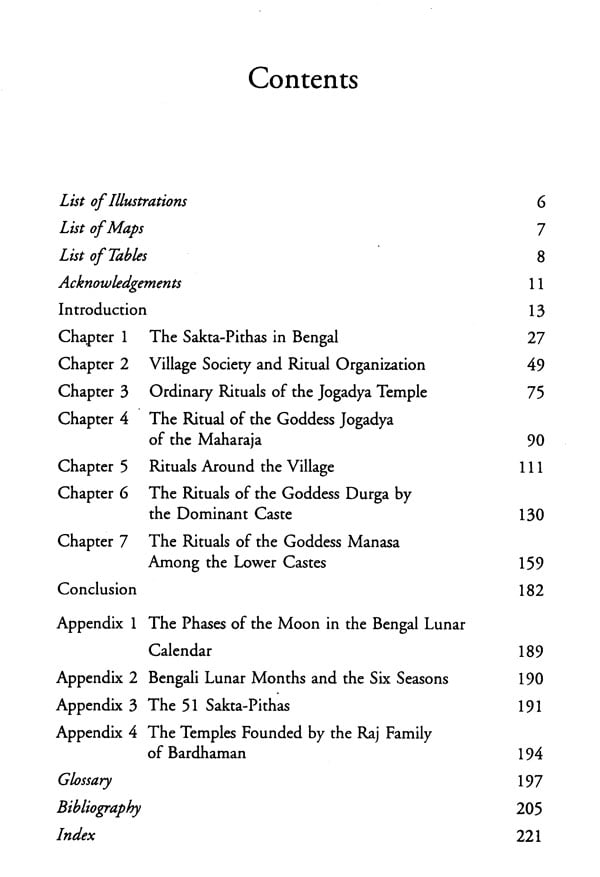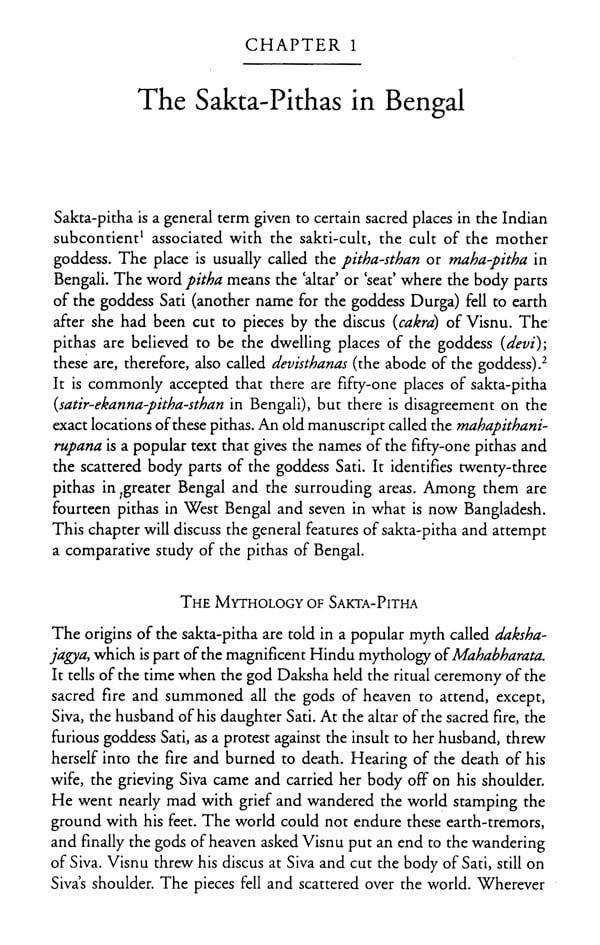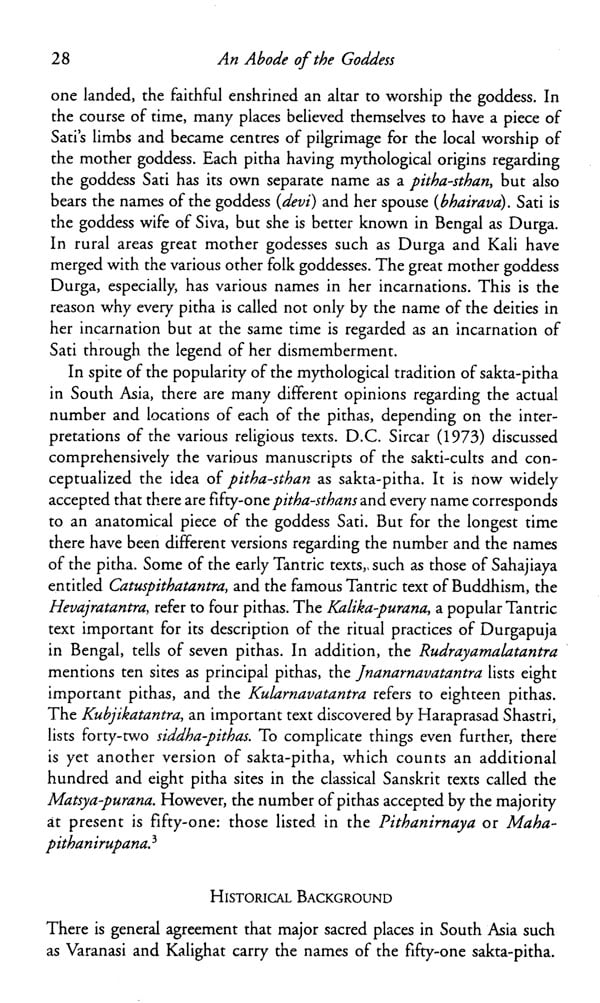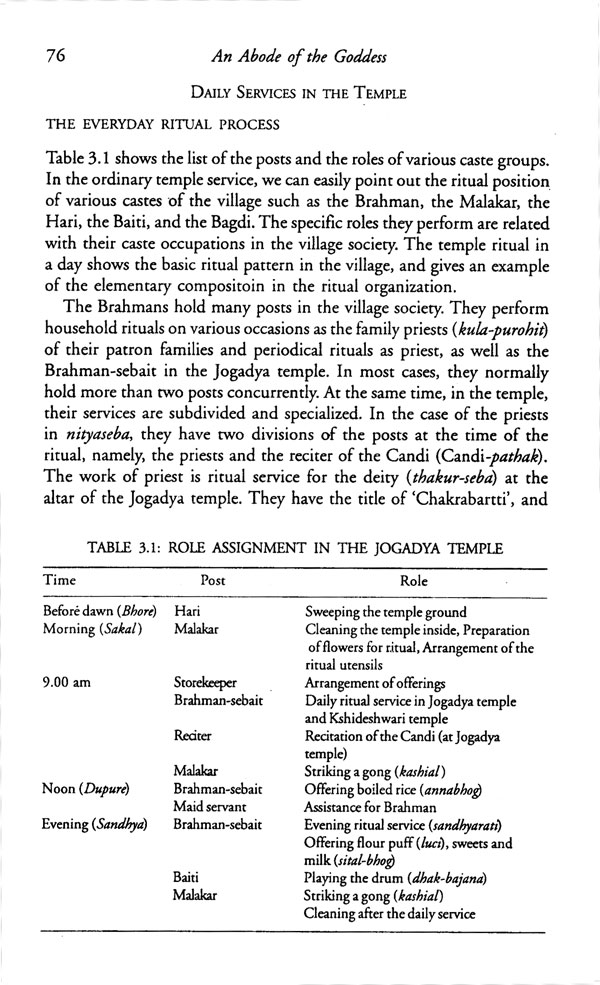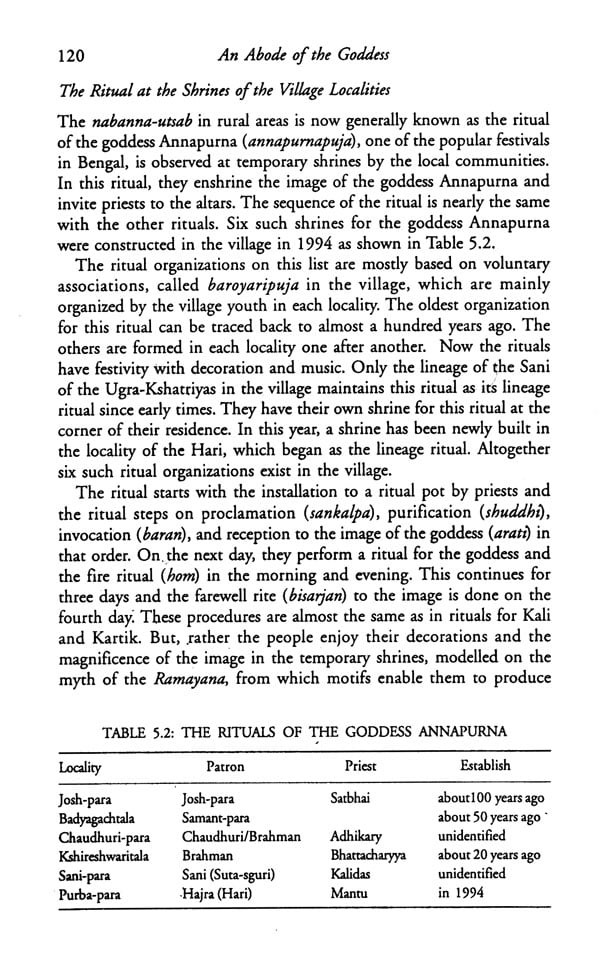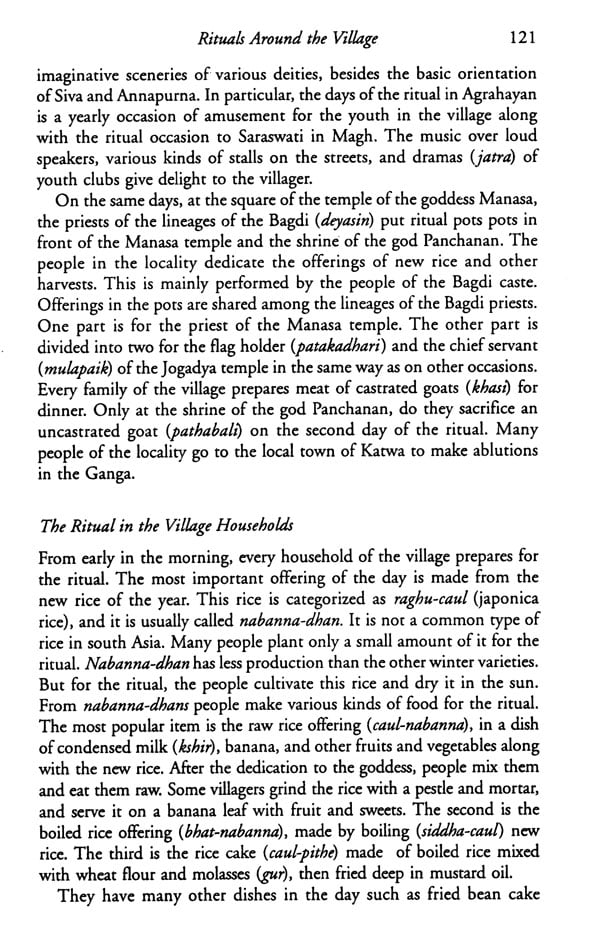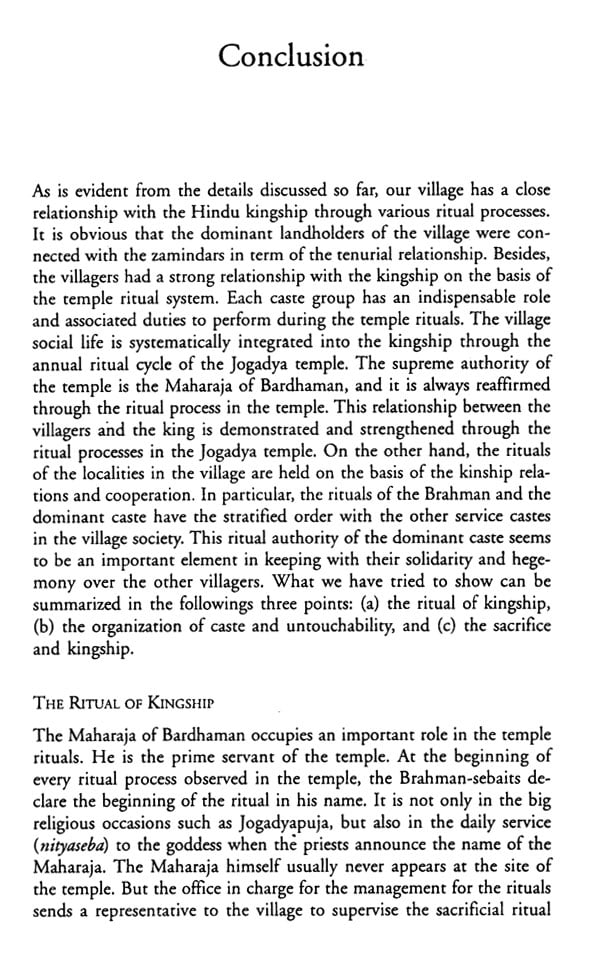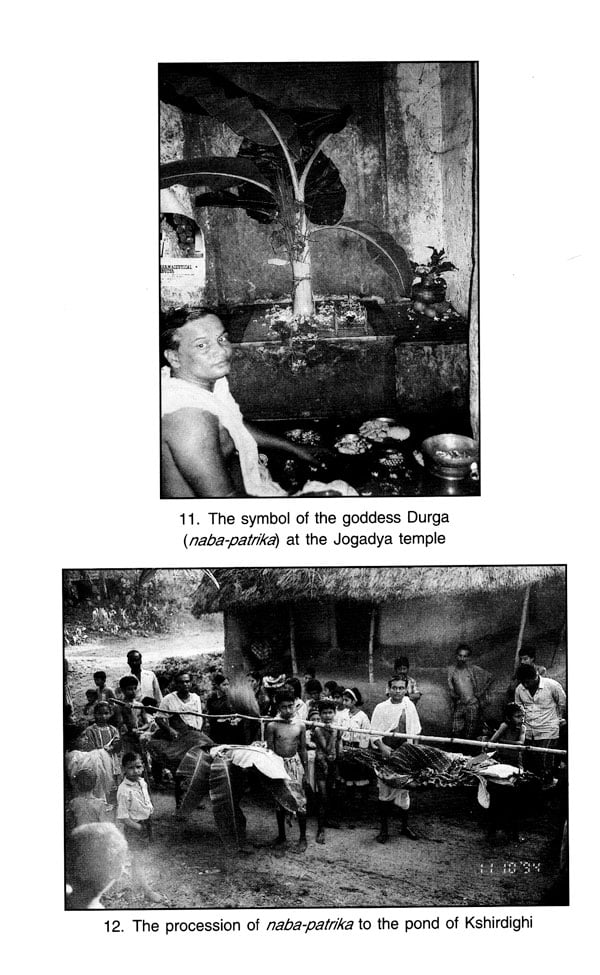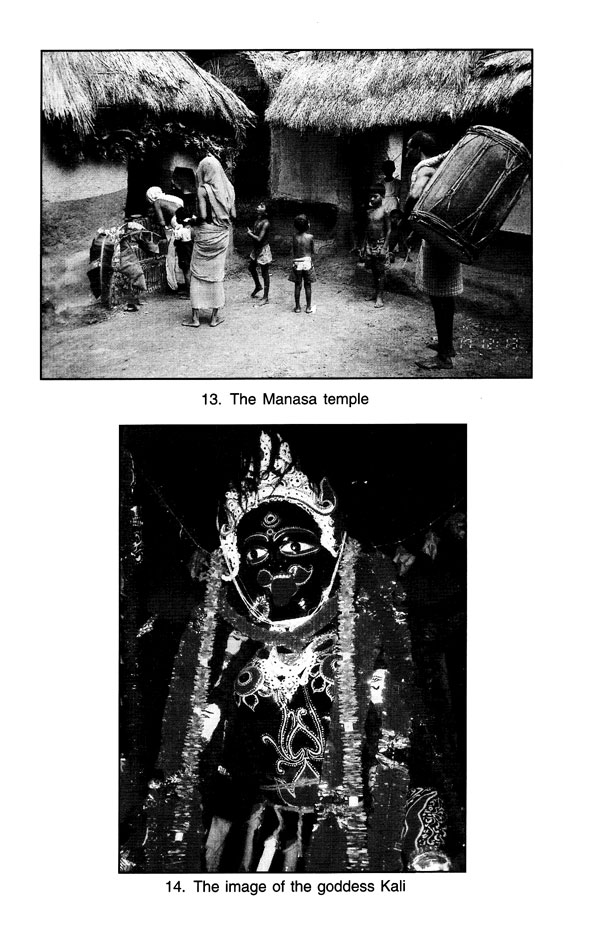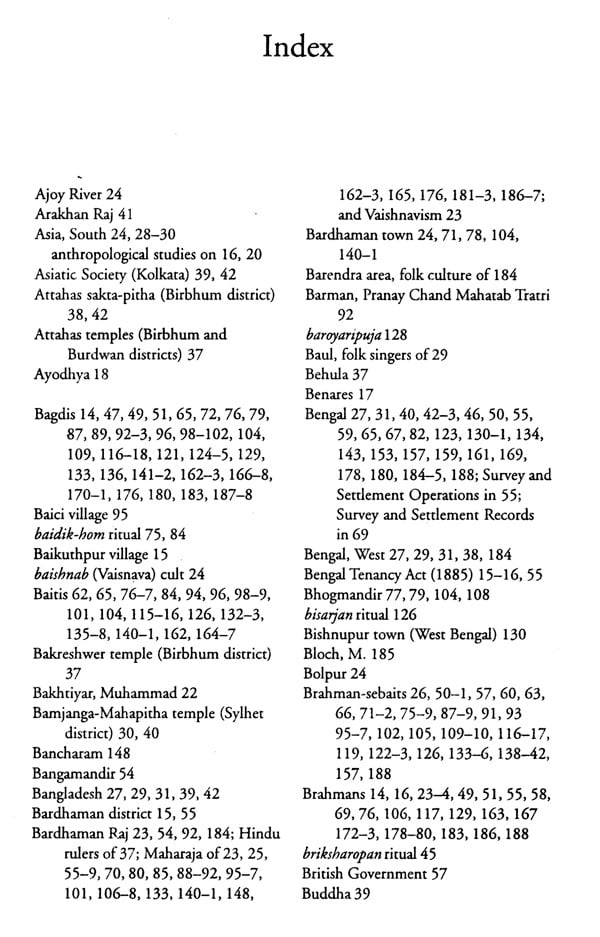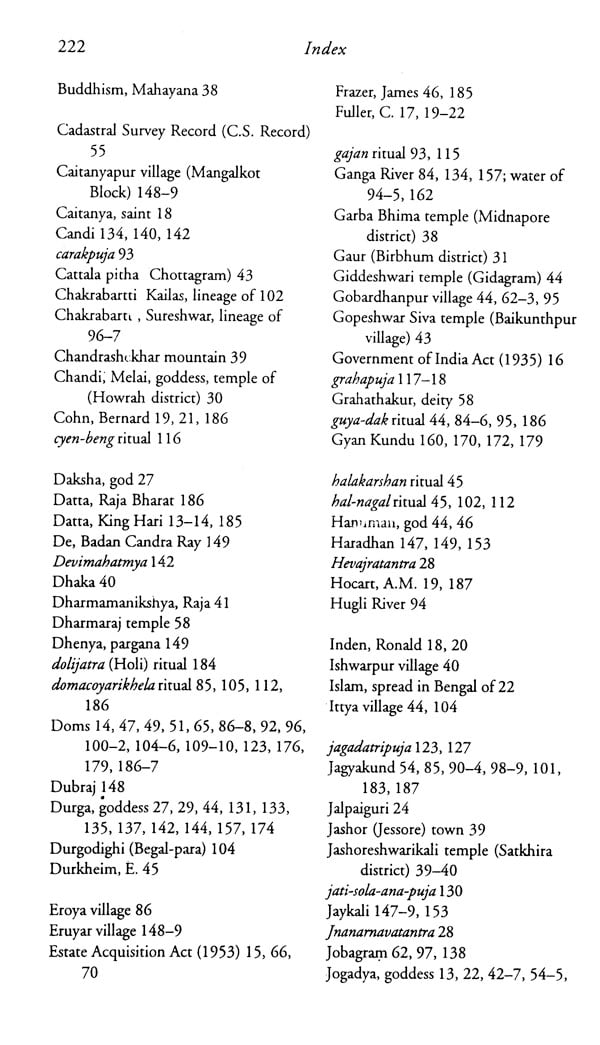
An Abode of The Goddess (Kingship, Caste and Sacrificial Organization in a Bengal Village)
Book Specification
| Item Code: | NAZ767 |
| Author: | Masahiko Togawa |
| Publisher: | Manohar Publishers and Distributors |
| Language: | English |
| Edition: | 2006 |
| ISBN: | 8173046778 |
| Pages: | 232 (23 B/W Illustrations) |
| Cover: | HARDCOVER |
| Other Details | 8.80 X 5.50 inch |
| Weight | 390 gm |
Book Description
This book, based on the field survey, is about a village society in Bengal, and its relationship with Hindu kingship on the ritual organization of an old temple. The village temple is well known for being one of 51 sakta-pithas scattered over the Indian subcontinent. Sakta-pithas mean centres of Sakti worship or seat of the goddess Sati (another name of the goddess Durga) in Bengali, where the body parts of the goddess Sati fell to earth after she had been cut to pieces by the discus of Visnu. Every place believed to have a Sati's limb became the centre for the worship of the sakti-cult, or an abode of the goddess (pitha-sthan).
The village temple prospered under the patronage of Maharaja Kirtichand (1702-40) of Bardhaman Raj, though the temple history is far older than this. At the beginning of British rule, the Royal family of Bardhaman became the largest zamindar in Bengal. They exercised great authority over the local soiety which is still observable in the various ritual processes.
The temple organization consists of the ritual posts and roles assigned to the various castes, lineages and households, which are fundamentally based on the kinship relations in the village. At the same time, the temple organization is founded on the service tenures granted by the Bardhaman Raj since the early eighteenth century, and even the village untouchables are endowed with indispensable roles in the temple ritual as servants of the goddess. The analysis reveals the strong influences of the indigenous polity over ordinary life in the rural society.
Masahiko Togawa is Associate Professor of Cultural Anthropology at Hiroshima University, Japan.
This book is about a village society and its relationship with Hindu kingship in the light of the ritual organization of an old temple. In this temple, there are ritual posts and roles that were assigned to the various service castes and lineages. The village, Kshiragram, is famous as one of 51 sakta-pithas or centres of Sakti worship in Bengal, and the village temple (jogadya-mandir) prospered under the patronage of the Bardhaman Raj (Burdwan Raj) in the early eighteenth century. The temple organization consists, on the one hand, of the various caste groups and lineages and, on the other, the service tenures granted by the Bardhaman Raj in the late medieval period. The ritual authority of the king is still perceptable, as we shall see. My analysis of the ritual system shows the strong relationship between the village society and the kingship, and indicates how deeply the social life of the village has been influenced by the Hindu kingship through its ritual practices.
Extant Bengali documents indicate that there was a close relationship between the Raj family and the village through the Jogadya temple in the early eighteenth century. Since then, the village temple has enjoyed the patronage of the kings of Bardhaman, and royal influence over the villagers still lives on in the ritual organization of the village temple.
Under the Emperor of Delhi, Kirtichand (the Bardhaman Maharaja, reign 1702-40) was granted zamindari over this area. An ancient Mahapitha, Kshiragram, was one of the villages under its zamindari. It is believed that this sacred place is a dwelling of the goddess Jogadya and her spouse, Kshirkhantak. Kirtichand was extremely delighted with the acquisition of the zamindari of Mahapitha. He built a temple to perform the ritual of the goddess, an annexed building designed for the bedroom of the goddess's night rest (sayan griha), and a dance hall (nath-mandir) in the village. The inscription on a stone of the altar inside the temple was so damaged that it is now undecipherable. But the old tradition of the temple rituals preserved by the villagers remains intact since the reign of the Bardhaman Raj. (Bardhamaner rajbsanghaucarita, 1913, p. 25)
The history of the temple is, however, far older than this if we are to go by the legends and myths about Jogadya recited by the villagers. During the reign of the legendary King Hari Datta, there used to be human sacrifice in front of the image of the goddess. The lineage of Datta, one of nine Kshatriya lineages in the village, is regarded as the descendant of this legendary King. Today a buffalo sacrifice takes the place of human sacrifice to the goddess on the final day of the great festival. At the altar of the goddess a representative of the Dom caste has an important role: he cuts his hand and offers his own blood to the goddess. In this way, the ritual organization involves various caste gruops, according to the historical origin of their office and the right to participate. This system of offices and roles for each caste and lineage is organized hierarchically, but it is the kingship of Bardhaman that has been the ultimate source of the honour of the temple since the late medieval period.
Book’s Content and Sample Pages